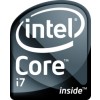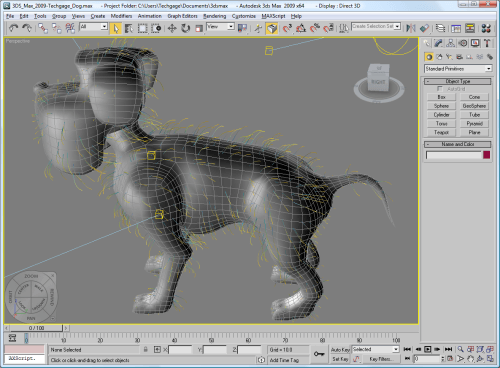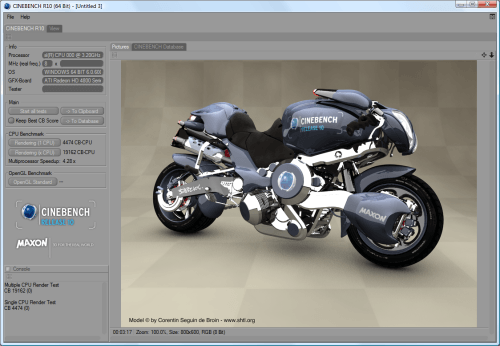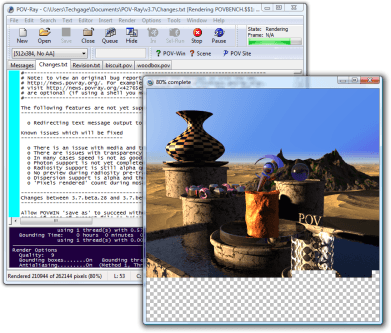- Qualcomm Launches Snapdragon 4 Gen 2 Mobile Platform
- AMD Launches Ryzen PRO 7000 Series Mobile & Desktop Platform
- Intel Launches Sleek Single-Slot Arc Pro A60 Workstation Graphics Card
- NVIDIA Announces Latest Ada Lovelace Additions: GeForce RTX 4060 Ti & RTX 4060
- Maxon Redshift With AMD Radeon GPU Rendering Support Now Available
Intel Core i7 Performance Preview

With Core i7’s launch due in just a few weeks, there’s no better time than right now to take a hard look at its performance, which is what we’re taking care of today. In addition to our usual performance comparisons with last-gen CPUs, we’re also taking an in-depth look at both QPI and HyperThreading performance, and some of our results may surprise you.
Page 6 – Workstation: Autodesk 3ds Max, Cinebench, POV-Ray
Autodesk’s 3ds Max is without question an industry standard when it comes to 3D modeling and animation, with DreamWorks, BioWare and Blizzard Entertainment being a few of its notable users. It’s a multi-threaded application that’s designed to be right at home on multi-core and multi-processor workstations or render farms, so it easily tasks even the biggest system we can currently throw at it.
For our testing, we use two project files that are designed to last long enough to find any weakness in our setup and also allows us to find a result that’s easily comparable between both motherboards and processors. The first project is a dog model included on recent 3ds Max DVD’s, which we infused with some Techgage flavor.
Our second project is a Bathroom scene that makes heavy use of ray tracing. Like the dog model, this one is also included with the application’s sample files DVD. The dog is rendered at a 1400×1050 resolution, while the Bathroom is rendered as 1080p (1920×1080).

I prefer to begin off our processor reviews with rendering-type jobs, because if there is a crowd that can benefit from faster CPUs, it’s 3D designers. Most of these applications were multi-processor-capable even before Dual-Core processors were available, so they were really ahead of the game, and have a good grasp on how to maximize all available threads, as you can see above.
Interesting results to compare would be our QX9770 and 920. Even though the QX9770 has a much faster clock speed of 3.2GHz, the 2.66GHz 920 proved 21.8% faster overall in our Bathroom render, and 9.6% faster in our Techgage Dog render. These results are incredible, but are made more incredible by the fact that these are not clock-for-clock comparisons.
So let’s tackle that, then. In comparing the QX9770 at 3.20GHz to the new Extreme 965, also at 3.20GHz, the latter delivered results 45.9% faster in our Bathroom render and 31.6% faster in our Techgage Dog render. Judging by these results… if you’re a 3D artist, you need Core i7.
As we’ll see later in the article, Core i7 is faster clock-for-clock than Core 2 Quad (eg: Turbo turned off), but what helps speeds things up further is the addition of HyperThreading. These applications know how to make good use of all threads available, and the graph above proves it.
Cinebench R10
Like 3DS Max, Cinema 4D is another popular cross-platform 3D graphics application that’s used by new users and experts alike. Its creators, Maxon, are well aware that their users are interested in huge computers to speed up rendering times, which is one reason why they released Cinebench to the public.
Cinebench R10 is based on the Cinema 4D engine and the test consists of rendering a high-resolution model of a motorcycle and gives a score at the end. Like most other 3D applications on the market, Cinebench will take advantage of as many cores as you can throw at it.

Reaffirming our faith that i7 is all-around better for rendering, the results here show just how much potential there is in the new chip. Compare once again the QX9770 to the Extreme 965. For our multi-threaded test, the latter proved to be 33.9% faster, while as a single-threaded render, we saw improvements of 12.3%. So, while it’s still faster, it goes to show just how much rendering jobs thrive on having more threads to work with.
POV-Ray 3.7
Similar to Cinebench, the “Persistence of Vision Ray Tracer” is as you’d expect, a ray tracing application that also happens to be cross-platform. It allows you to take your environment and models and apply a ray tracing algorithm, based on a script you either write yourself or borrow from others. It’s a free application and has become a standard in the ray tracing community and some of the results that can be seen are completely mind-blowing.
The official version of POV-Ray is 3.6, but the 3.7 beta unlocks the ability to take full advantage of a multi-core processor, which is why we use it in our testing. Applying ray tracing algorithms can be extremely system intensive, so this is one area where multi-core processors will be of true benefit.
For our test, we run the built-in benchmark, which delivers a simple score (Pixels-Per-Second) the the end. The higher, the better. If one score is twice another, it does literally mean it rendered twice as fast.

Although 3ds Max and Cinebench’s results blew our expectations to pieces, the largest performance gains are seen with POV-Ray, with an incredible 55.4% increase between Core 2 Quad’s and Core i7’s of the same clock speed.
What we can garner from our results is that Core i7 in general is going to decrease rendering times for most any type of 3D job, but that’s especially the case if ray tracing is used. Take for example our Bathroom model in 3ds Max. It uses ray tracing to a heavy degree, and that’s where our largest gains were seen. POV-Ray is no different, as its sole focus is ray tracing, so it’s no surprise to see equally-impressive gains.
Not a 3D designer? I wouldn’t stress too much over it, because 3D applications aren’t the only place where ray tracing can be used. Where else? Games! If Core i7 can increase performance with ray tracing-specific render jobs like those shown above, then it would imply that the same increases in performance would be seen in games that also use it.
This raises another question, or thought. If Intel increased ray tracing performance this much with Core i7, what does that mean for Larrabee? Good things, hopefully.
Support our efforts! With ad revenue at an all-time low for written websites, we're relying more than ever on reader support to help us continue putting so much effort into this type of content. You can support us by becoming a Patron, or by using our Amazon shopping affiliate links listed through our articles. Thanks for your support!








